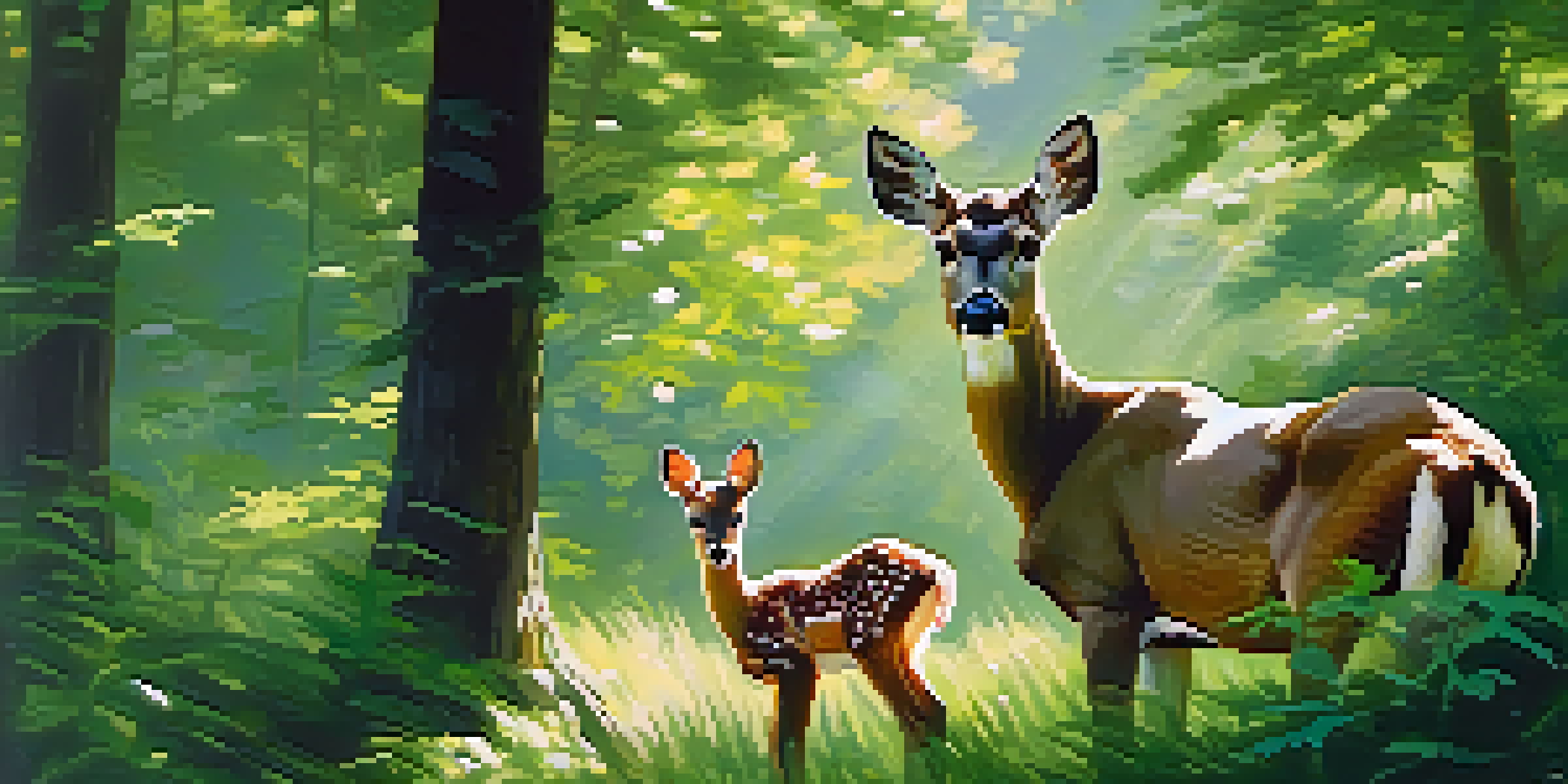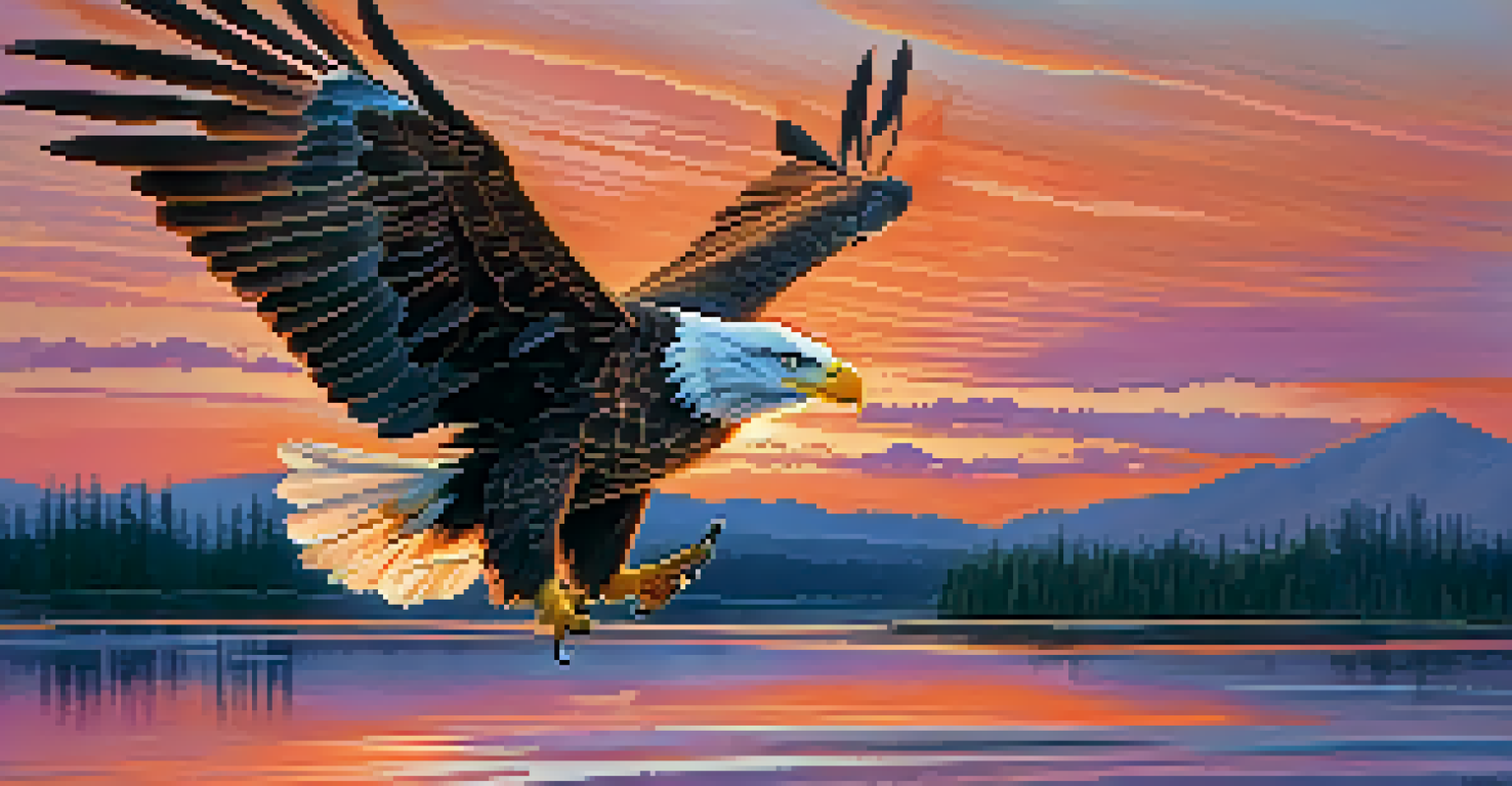Understanding Animal Behavior for Better Photos

Why Understanding Animal Behavior Matters for Photographers
Understanding animal behavior is crucial for photographers looking to capture stunning images. When you know how animals behave, you can anticipate their actions and be ready to snap the perfect shot. This knowledge not only improves your timing but also allows you to tell a story through your photos.
In photography, there is a reality so subtle that it becomes more real than reality.
For instance, observing the way a bird interacts with its environment can lead to incredible shots of feeding or nesting. By knowing what to look for, you can position yourself in the right spot at the right moment, ensuring you don’t miss those fleeting opportunities. In essence, understanding behavior transforms your photography from simple snapshots into meaningful narratives.
Additionally, a deeper connection with the subject fosters patience and respect, both essential qualities for wildlife photographers. The more you appreciate the intricacies of animal behavior, the more likely you are to capture authentic moments that resonate with viewers.
The Basics of Animal Behavior: Key Concepts to Know
To effectively photograph animals, it's helpful to grasp some key concepts in animal behavior. For instance, animals often exhibit patterns in their daily routines, such as feeding, mating, and resting. Knowing these patterns can guide you in choosing the best times to observe and photograph them.

Moreover, understanding the motivations behind certain behaviors—like why a deer might be skittish or why a bird might be singing—enables you to predict their movements. This predictive ability can dramatically increase your chances of capturing compelling images. Just like a chess player anticipates an opponent's moves, photographers can gain an advantage by understanding their subjects.
Mastering Animal Behavior Enhances Photos
Understanding animal behavior allows photographers to anticipate actions and capture meaningful moments.
Lastly, familiarizing yourself with common animal behaviors, such as territorial displays or social interactions, can enrich your photography. These behaviors not only enhance the visual narrative of your images but also help convey the essence of the animal's life.
Observing Animal Habitats for Better Photography Opportunities
Every animal has its preferred habitat, and understanding these environments can lead to better photographic opportunities. For example, if you know that a specific species thrives in wetlands, you can plan your shoots accordingly. This foresight allows you to immerse yourself in the right setting, increasing your chances of encountering your subject.
The best thing about a picture is that it never changes, even when the people in it do.
Moreover, observing how animals utilize their habitats can unveil unique photographic angles. A bear fishing in a river or a fox trotting through a meadow can make for captivating shots. By studying the landscape and its inhabitants, you can create a visual story that highlights the relationship between the animal and its environment.
In addition to physical settings, consider the time of day and weather conditions. Animals are often more active during specific times, like dawn or dusk. This knowledge can help you not only capture vibrant images but also experience the beauty of nature as it awakens or winds down.
Using Patience and Timing in Wildlife Photography
Patience is a virtue in wildlife photography, and understanding animal behavior can significantly enhance this quality. Animals often take their time, and rushing the process can lead to missed opportunities. By observing quietly and waiting for the right moment, you can capture breathtaking images that showcase the essence of the animal.
For instance, if you're photographing a nesting bird, it’s essential to remain still and allow the bird to feel safe. This patience not only benefits your photography but also respects the animal's space and natural behavior. When you allow wildlife to act naturally, your images will be more authentic and engaging.
Patience and Timing Are Crucial
Waiting for the right moment and knowing when animals are most active can lead to breathtaking wildlife images.
Timing is equally important; knowing when animals are most active can make or break your photo session. By aligning your shooting schedule with these peak activity times, you increase your likelihood of capturing stunning images that reflect genuine behavior.
Building Trust with Your Animal Subjects
Building trust with your animal subjects can lead to more intimate and stunning photographs. This trust often develops over time as animals become accustomed to your presence. For photographers, this means spending time in the field, observing without intrusion, and allowing animals to adjust to the environment.
For example, wildlife photographers often use blinds or conceal themselves in natural surroundings to minimize disturbance. This approach helps animals feel secure and allows for more genuine behaviors to unfold. When animals are at ease, they are more likely to exhibit natural actions, resulting in more captivating images.
Additionally, developing a rapport with animals (even if it's one-sided) can open doors to unique photographic opportunities. Over time, you may find that animals approach you or engage in behaviors they would normally shy away from, enriching your photography experience.
Capturing Emotional Moments in Animal Behavior
One of the most powerful elements of wildlife photography is capturing emotion in animal behavior. Whether it's a mother caring for her young or a playful interaction between siblings, these moments can evoke strong feelings in viewers. Understanding the emotional depth of animal behavior allows photographers to frame their shots to highlight these connections.
For instance, witnessing a lioness nurturing her cubs can stir profound emotions when captured effectively. By being attuned to these moments, photographers can convey the beauty and struggles of the animal kingdom. This connection not only enriches the viewer's experience but also deepens the impact of your work.
Ethical Practices Foster Sustainability
Approaching wildlife photography ethically ensures respect for animals and their habitats while still capturing stunning visuals.
Moreover, storytelling through emotional moments can create a sense of urgency in conservation efforts. When viewers see the bond between animals, they may be more compelled to support wildlife preservation initiatives, further highlighting the importance of your role as a photographer.
Ethical Considerations in Wildlife Photography
As photographers, it's crucial to approach wildlife photography with an ethical mindset. Understanding animal behavior helps ensure that your presence does not disrupt their natural activities or habitats. Ethical photography respects the well-being of the subject while still allowing for stunning images to be captured.
For instance, avoiding invasive techniques or disturbing nesting sites is essential for maintaining the integrity of wildlife. By prioritizing the animals’ needs over your photographic ambitions, you contribute to a more sustainable approach to wildlife photography. This balance fosters a healthier relationship between photographers and the natural world.

Furthermore, ethical considerations extend to how images are shared and portrayed. Responsible storytelling can raise awareness about conservation issues and promote respect for wildlife. By being mindful of the impact of your work, you contribute positively to both your audience and the animals you photograph.